Metal is Apple Inc.’s API providing direct GPU access for high-performance graphics on Apple devices. It enhances games and professional applications, surpassing OpenGL in draw call support by up to 100 times. Its low-overhead design reduces CPU workload, improving overall performance and enabling machine learning frameworks like TensorFlow and PyTorch.
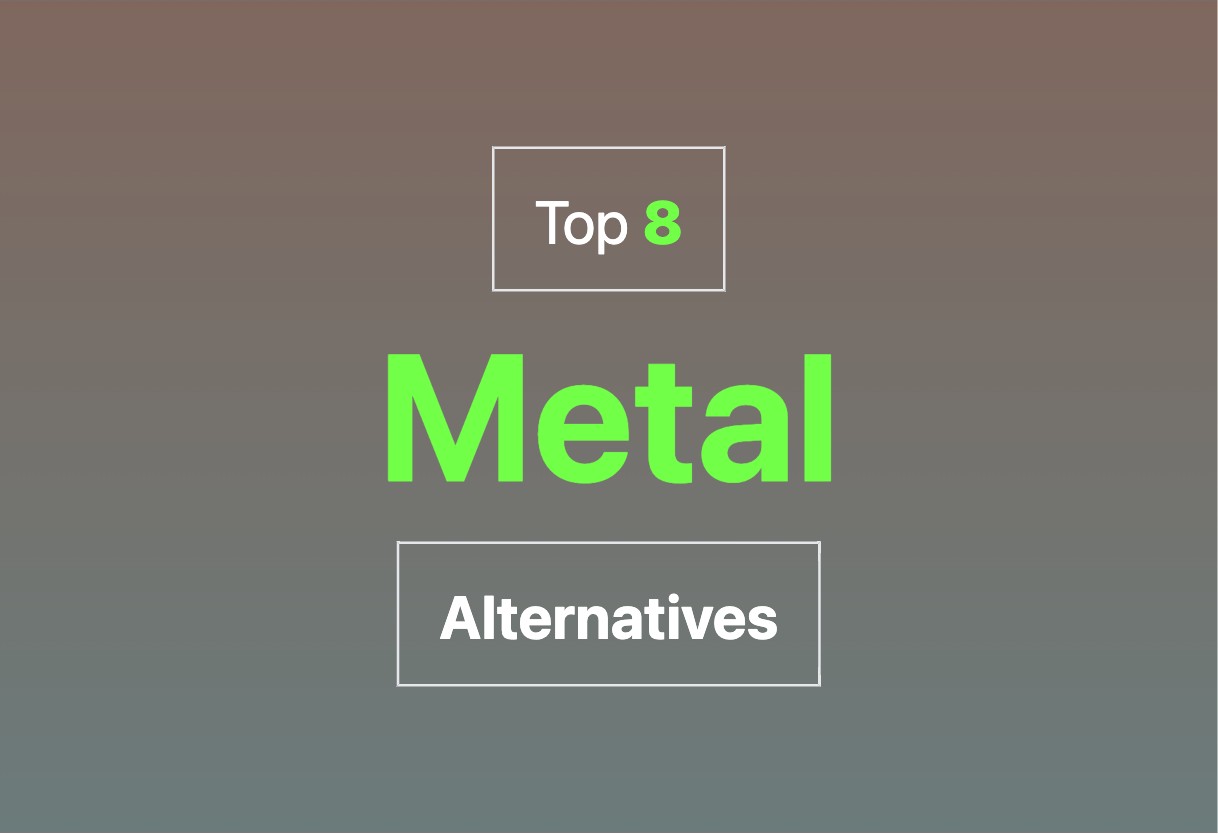
For those exploring alternatives to Metal, choices encompass Vulkan, OpenGL, OpenCL, WebGL 2, Native, CUDA, WASM, WebGPU.
Vulkan
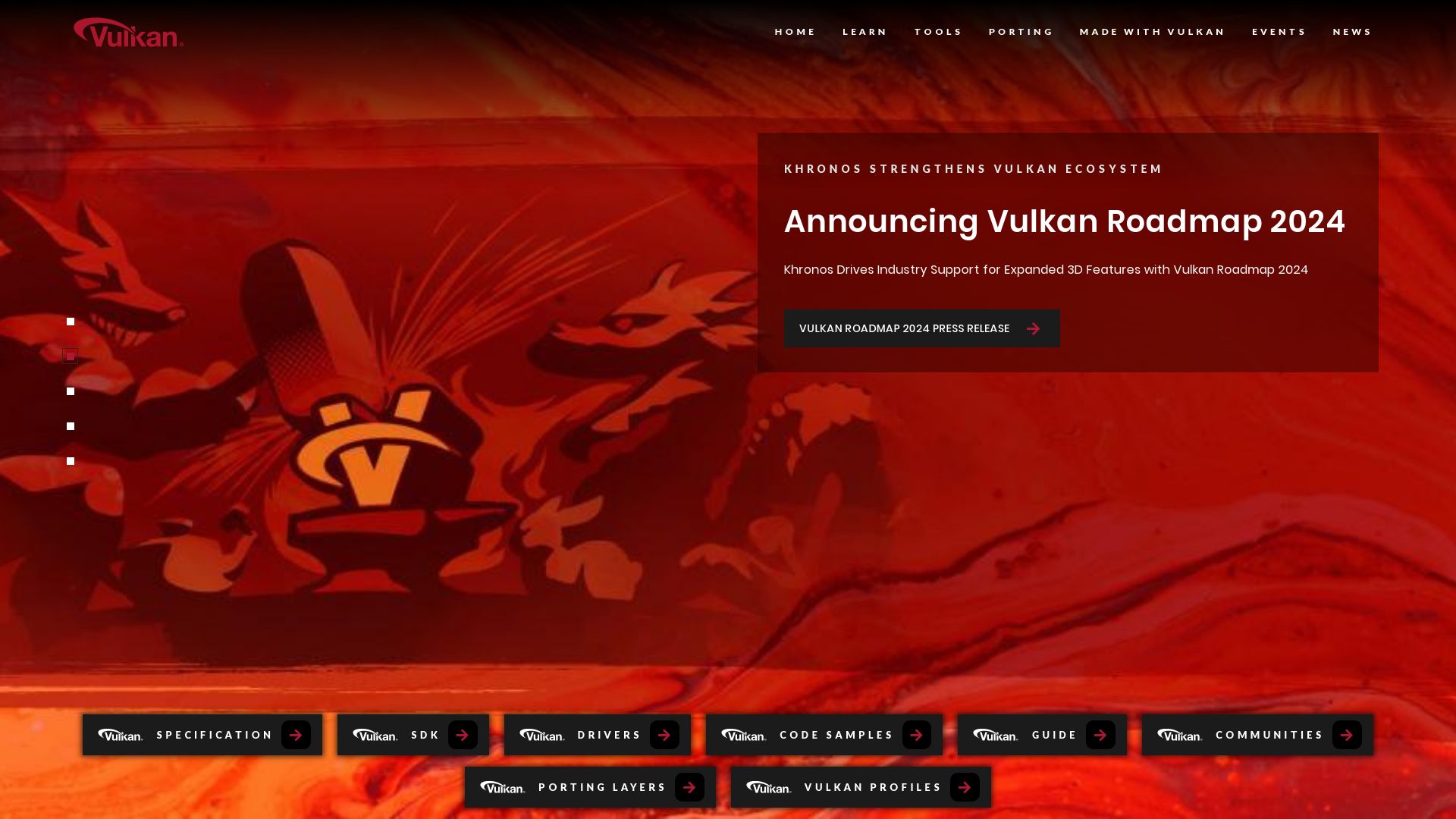
Vulkan, a cross-platform industry standard graphics API, offers a robust platform for developers to cater to a diverse device range. Actively evolving to stay abreast of the technological curve, Vulkan integrates hardware-accelerated video compression and decompression, supporting fully accelerated H.264 and H.265 decode.
Vulkan Top Features
- Streamlined Core Standard: Vulkan 1.3 helps reduce feature fragmentation.
- Control at the granular level: Offers exact control over scheduling, memory allocation and synchronization
- Comative platform fragmentation: Vulkan Portability encourages layered implementations over other APIs, to counter fragmentation.
| Feature | Description |
|---|---|
| Memory model | First graphics API with a formal model, utilizing Alloy for memory operations precision. Built on C++ memory model. |
| Hybrid viewport technology | Employs Radeon Rays and Vulkan for enhanced 3D graphics performance, supporting complex 3D models. |
| Vulkan SC 1.0 specification | Caters to safety-critical systems aligning graphics and compute requirements. |
Vulkan Limitations
- Deployment timelines and device support clarity not always provided.
- Limited support for ray tracing in the existing Vulkan framework.
Vulkan Use Cases
Use case 1 – Graphic Programming
An ideal companion for developers starting their graphic programming journey, Vulkan makes graphics API more approachable and manageable.
Use case 2 – High-Performance Gaming
Vulkan aids in the seamless integration of advanced graphics techniques into games for optimized performance and realism.
Use case 3 – Mobile Development
With Vulkan extensions dedicated to mobile, developers can improve the state of graphic APIs on mobile platforms.
OpenGL

OpenGL, engineered by Silicon Graphics in 1992, is a robust, low-level software library created for hardware-accelerated 3D graphics, and AR & VR technologies. Regulated by the Khronos Group, it’s leveraged across various industries, gaming being a key one, and platforms for rendering and modelling.
Best Features
- Hardware Acceleration: OpenGL is designed to be hardware-accelerated, making it particularly effective for 3D graphics in AR and VR applications.
- Diverse Application Usage: OpenGL is versatile, servicing video games, CAD solutions, and scientific applications.
- Extensions: OpenGL allows access to advanced hardware-specific features and functionalities through extensions.
| Feature | Description |
|---|---|
| Mathematics Integration | OpenGL uses mathematical concepts like linear algebra, geometry, and trigonometry for graphics processing. |
| Vulkan API | As the successor to OpenGL, Vulkan API unifies OpenGL and OpenGL ES into one API, making OpenGL an important learning tool for understanding Vulkan API. |
OpenGL Downsides
- C++ Prerequisite: To use OpenGL, a thorough understanding of the C++ programming language is necessary.
- Version Complications: Defined hardware-specific features are accessed by different OpenGL versions through extensions. Hence, advanced knowledge and understanding are needed to fully exploit the capabilities.
OpenGL Pricing
As an open-source software library, OpenGL is free for utilization and development.
OpenGL Use Cases
Use case 1: Gaming
Commercial games like ID Software’s Quake series use OpenGL for graphics engines, capitalizing on its hardware-accelerated 3D graphics capabilities.
Use case 2: CAD Visualization
Due to its potent rendering capabilities, OpenGL is extensively used in CAD applications providing high precision graphics.
Use case 3: Scientific Applications
With its core strength in 3D graphics, OpenGL has value in scientific applications for study and exploration.
OpenCL
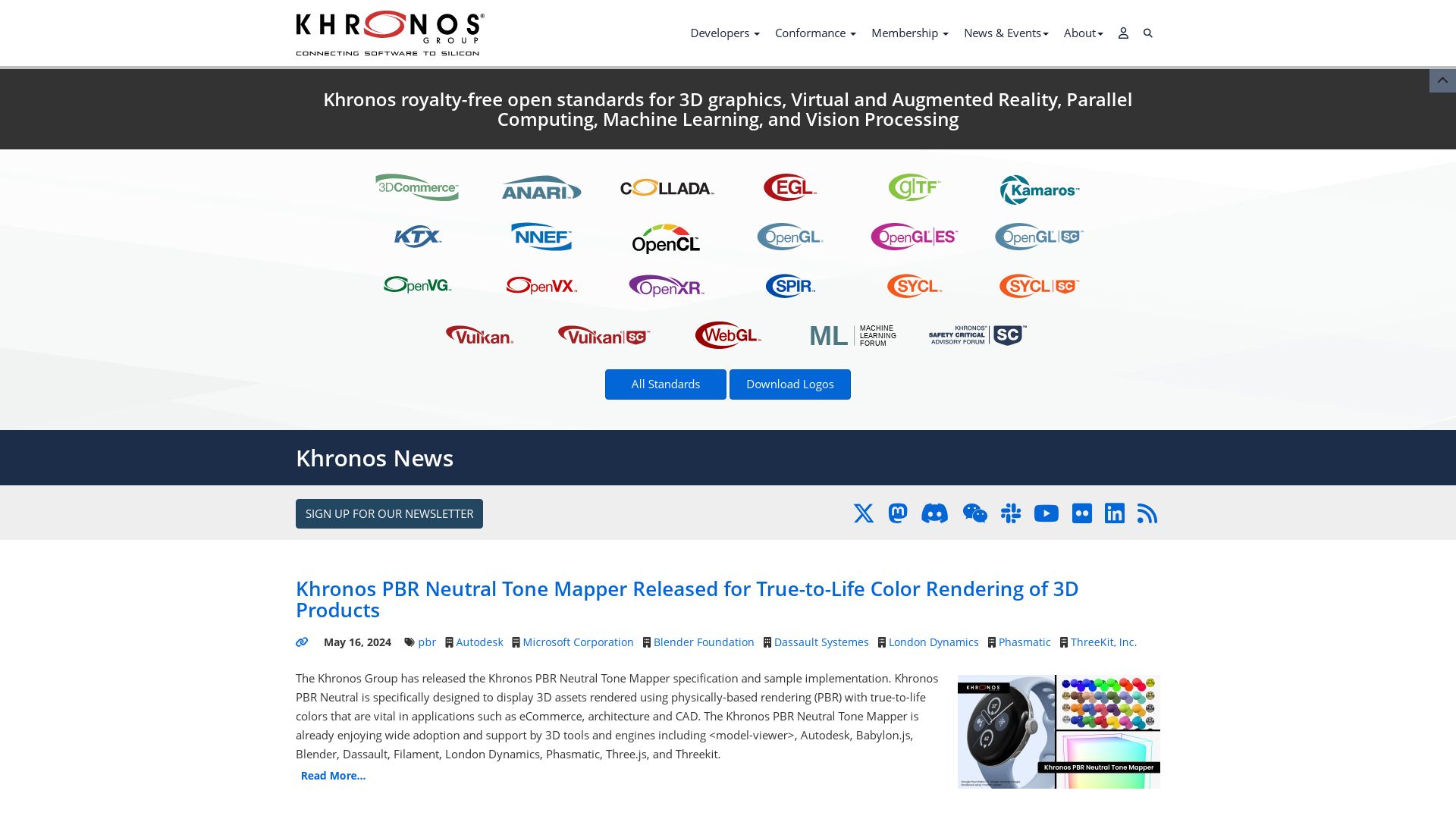
Exploring the realm of GPU-related computations, OpenCL stands out as a heterogeneous programming platform, extending its capabilities across GPUs, CPUs, and specialized hardware. Its adaptable nature allows it to function effectively on a range of platforms, carving a niche for itself as a major player in the realm of web graphics technology.
OpenCL Top Features
- Offers a rich framework with native support for parallel computing.
- Backs a combination of programming languages including C and C++.
- Owing to its open-source nature, it is supported across various operating systems, including Windows, Linux, and Mac OS.
- Boasting significant portability and interoperability, OpenCL is installable on a wide device range.
- Possesses enhanced debugging and profiling capabilities compared to its counterparts.
| Feature | Details |
| Open Standard | Facilitates easy porting between various host devices. |
| Market Utility | Improves speed and responsiveness within varied market categories. |
| Programming Tools | Provides a comprehensive range of programming tools for developers. |
OpenCL Disadvantages
- In terms of performance, OpenCL often trails behind CUDA due to CUDA’s optimization for Nvidia’s architecture.
- Though OpenCL has mature libraries, CUDA boasts extensive high-performance libraries.
- CUDA has a larger community, offering a vast pool of resources and support, compared to OpenCL’s steadily growing, but smaller, community.
OpenCL Pricing
Delving into the cost factor, OpenCL stands apart as an open-source standard, available free of charge. Its open-source nature allows for continuous improvement and wide accessibility for developers and companies.
OpenCL Use Cases
Use case 1: Supercomputers
OpenCL, with its robust parallel programming standard, is highly efficient for diverse accelerators in supercomputers, enhancing their speed, and overall performance.
Use case 2: Cloud Servers
OpenCL’s cross-platform functionality and ease of porting make it fitting for cloud servers, offering a seamless computing experience.
Use case 3: Mobile Devices
Due to its excellent portability, OpenCL can be conveniently used in mobile devices, resulting in accelerated applications and improved responsiveness.
WebGL 2
WebGL 2, a powerful rasterization engine, is your key to stunning 3D web applications. Its main function is to draw 3D, leaving the complexities of 3D aspects to other 3D libraries.
WebGL 2 Top Features
- Efficient use of the GPU for processing geometric primitives, offering rapid rendering.
- Support for GLSL code, providing high-performance applications.
- Advancement in light reflection and texturing, paving the way for realistic 3D scenes.
- Use of JavaScript Object Notation (JSON), making defining, storing and loading complex geometries a breeze.
| Uses “divide and conquer” approach | Render large amounts of data quickly and efficiently |
| Phong material | Delivers visually stunning, high-performance 3D applications |
| Depth buffer feature | Ensures accurate depth sorting, vital for 3D rendering |
WebGL 2 Limitations
- All knowledge of 3D math must be provided by the developer.
- Requires understanding of matrix math, normalized coordinates, frustums, and cross products.
- It offers limited support for 3D math like other comprehensive 3D APIs.
WebGL 2 Pricing
WebGL 2 is an open-source product, making it freely accessible to developers world-wide.
WebGL 2 Use Cases
Use case 1
For companies building interactive 3D applications, WebGL 2 provides the efficient GPU power, lighting, and texturing features required.
Use case 2
For individual developers craving for a hands-on approach, WebGL’s depth into 3D math and matrix offers a robust challenge.
Use case 3
For organizations preparing for the future, WebGL’s efficient use of functional geometry proves an asset.
Native
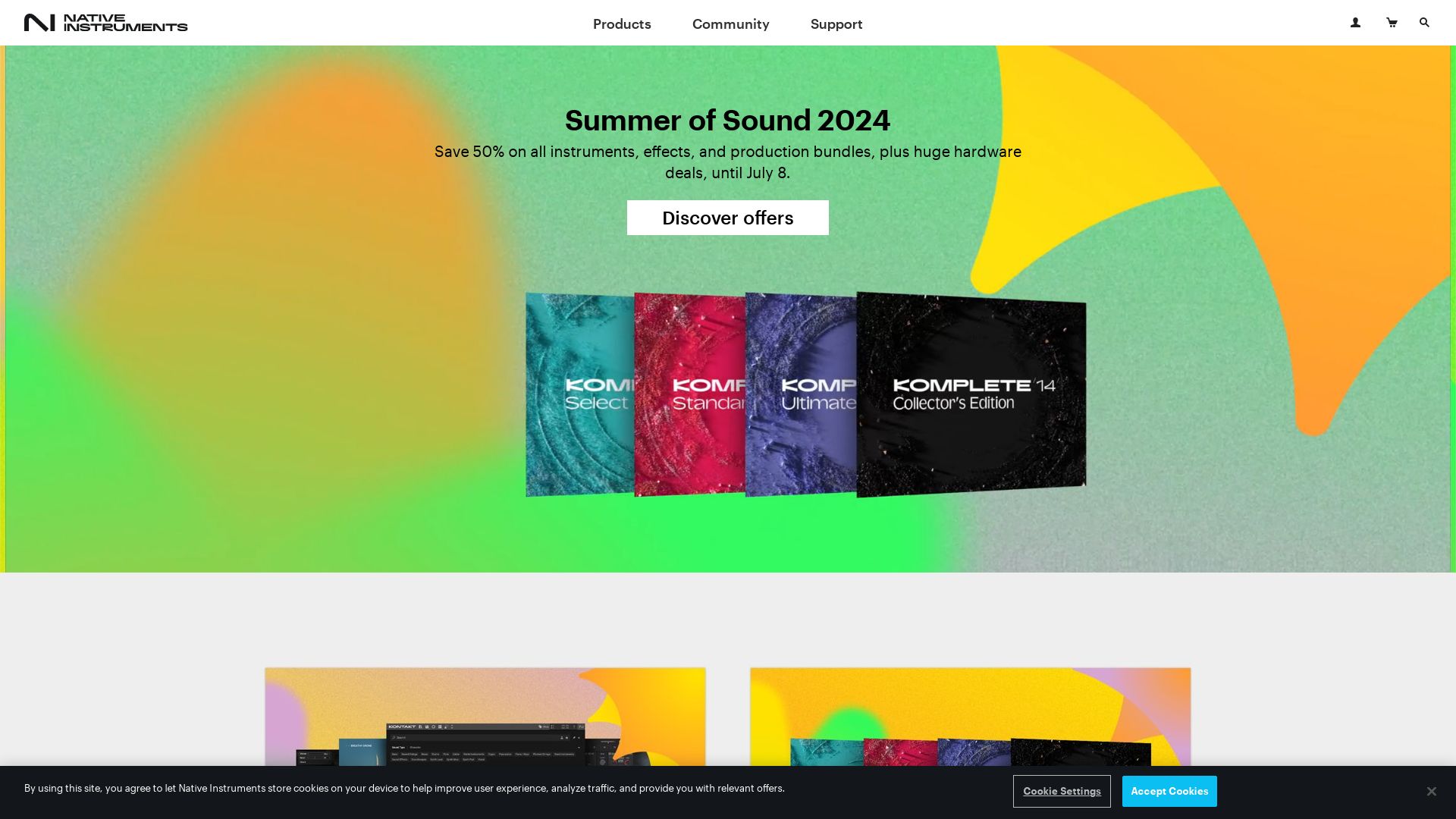
Native refers to binary data, written in pure 1s and 0s, or machine language that’s compiled to run on a processor such as Intel x86-class. It conforms to the processor’s instruction set architecture (ISA), with code generated to fit the specific software environment. It’s chosen for robust applications with criteria such as low-latency and resource efficiency. In mobile development, Native apps are coded for specific OS, offering improved speed and reliability due to their API interactions sans bridges.
Native Top Features
- ISA Compliance: Native code is attuned to the processor’s ISA, exemplifying its compatibility.
- Rugged Performance: It’s chosen due to its performance efficiency in challenging environments requiring low latency and minimum resource consumption.
- Targeted Compilation: Code generation is highly software environment specific, contributing to enhanced performance.
- Close-knit Interaction with Hardware: Being closer to the processor allows for more efficient operations.
- Speed and Reliability: Native apps, developed specifically for mobile OS are faster and more reliable.
- Swift and Kotlin Oriented: Following modern trends, Native development leans towards Swift for iOS and Kotlin for Android.
| Aspect | Detail |
|---|---|
| Compilation | Code is converted to machine language, optimizing software efficiency. |
| Android Development | Android Studio, Google’s official IDE, enhances Android native app development. |
| iOS Development | The main language for Apple is Swift. It’s popular due to its open-source nature, being supported by top tech companies. |
Native Limitations
- Restrictive Flexibility: Intrinsic to the system architecture it’s written for, cross-platform functionality requires additional layers of emulation.
- Programming Demands: Coding native commands specific knowledge of the processor architecture, adding complexity.
- Decreased Compatibility: Native software is designed to run on a specific OS, limiting its universal capability.
Native Use Cases
Use case 1: High Performance Computing
Native’s high efficiency and low latency make it an optimal choice for high performance computing applications.
Use case 2: Game Development
Catering to the harsh demands of modern gaming interfaces, Native allows developers to fully leverage device capabilities.
Use case 3: Mobile Application Development
With swift and Kotlin adoption, Native holds sway in mobile application development by optimizing app speed and reliability.
CUDA
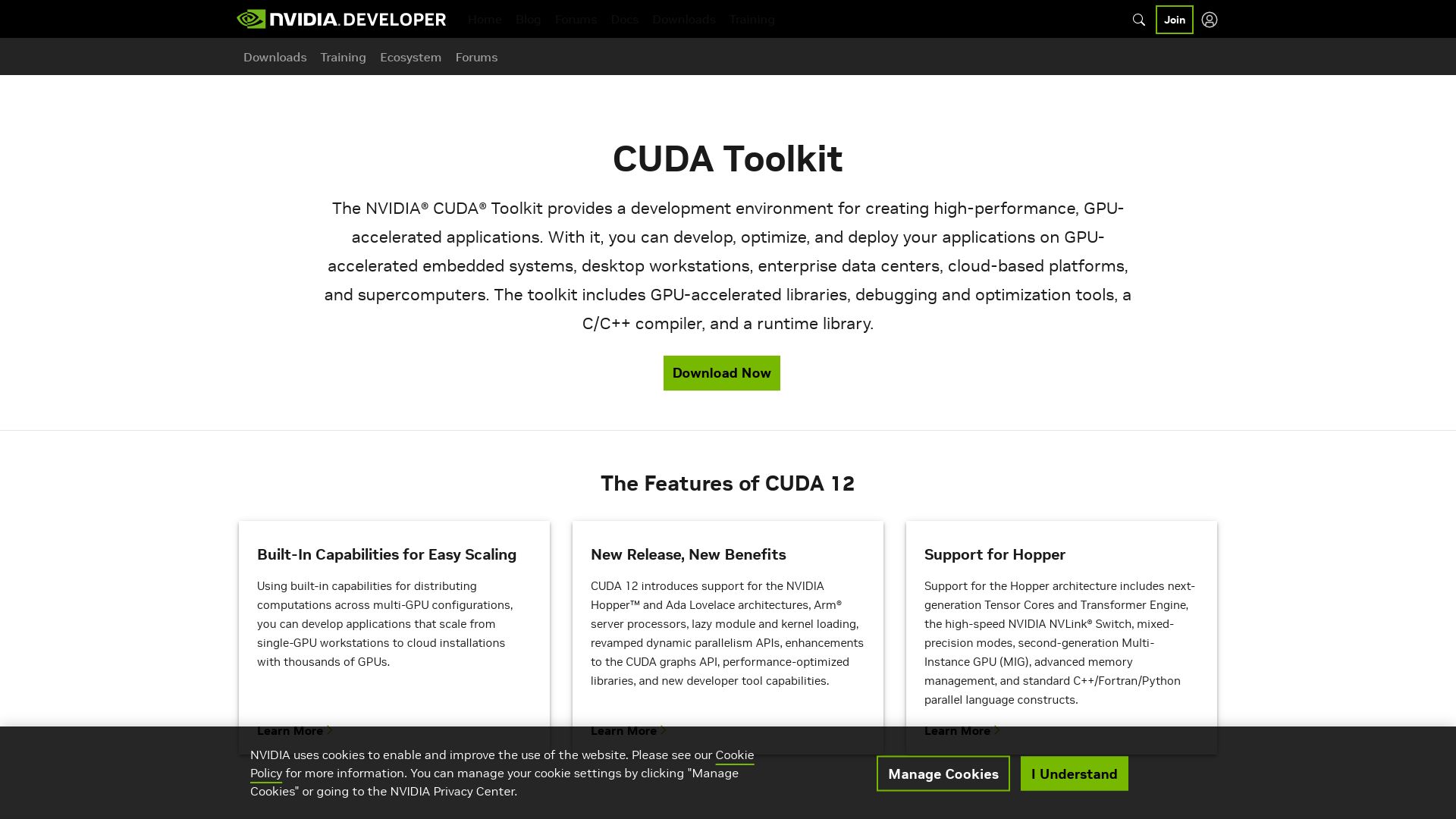
The Compute Unified Device Architecture (CUDA) is an extension of the C/C++ programming language developed by Nvidia. Known for enabling speedy parallel computations on over 100 million deployed GPUs, it offers significant acceleration to a vast array of application sectors.
CUDA Top Features
- Advanced GPU programming through C/C++ extension.
- Parallel computing platform and API model for enhanced speed.
- Elevated efficiency with potential 30-100x speed-up compared to microprocessors.
- Supports extensive parallel calculations and thousands of threads per application.
- Versatile across numerous application sectors.
| Feature | Description |
|---|---|
| Scatter read codes | Beneficial for integrated memory and virtual memory. |
| Bitwise and integer operations | Provides robustness in application development. |
| Dedicated hardware support | Dedicated to NVIDIA hardware offering optimized experience. |
CUDA Downsides
- Unilateral interoperability may limit collaboration.
- Source code limitations may pose obstacles for complex projects.
- Retention of support for older versions may be compromised.
- Affiliation to NVIDIA hardware may limit flexibility.
CUDA Use Cases
Use case 1: Computational Finance
In the realm of computational finance, CUDA can help perform calculations at blazing speeds, promoting the fast-paced analysis and data modeling required by financial institutions.
Use case 2: Deep Learning
For deep learning practitioners, CUDA serves as a powerhouse for training complex neural networks, significantly reducing processing times and enhancing model accuracy.
Use case 3: Medical Imaging
CUDA propels advancements in medical imaging by accelerating intricate computations, thereby aiding in real-time data analysis and potentially life-saving diagnoses.
WASM
Introduced in 2017, the WebAssembly (WASM) protocol was established as a W3C standard by 2019 and has skillfully enhanced the performance and capabilities of web platforms ever since. Its adoption is championed by major browsers like Chrome, Edge, Firefox, and WebKit.
WASM Top Features
- Performance: WASM vastly improves website performance, providing features and major performance gains over traditional JavaScript.
- Diversity: Enables the running of code from multiple languages on the web at near-native speed.
- Low-Level Binary Format: WASM uses low-level binary format, avoids the necessity of creating WebAssembly code. Its 1:1 correspondence ensures easy conversion with WebAssembly text-to-binary tools.
- Security: With a limited set of instructions and superior memory management, WASM reduces vulnerability attack surface and provides better memory safety.
| Feature | Details |
|---|---|
| Compatibility | Works alongside JavaScript, allows for high-performance functions and developer efficiency. |
| Flexibility | Can run across different containers, Kubernetes clusters, devices, multicloud environments, wherever a CPU instruction set can function. |
| Potential | Has vast potential to become a key component in composing apps that use truly universal building blocks, and improves on JavaScript’s reach, making it more deployable. |
WASM Limitations
- Lack of High-Level Constructs: Though efficient and streamlined, WASM is a low-level system, which can pose a challenge to developers accustomed to working with high-level languages.
- Debugging Limited: Despite having textual format support, debugging capabilities in WASM can be challenging.
WASM Pricing
As an open-source and freely available protocol, WASM brings its innovative approach to web coding and applications without a cost implication.
WASM Use Cases
Use Case 1: High-Performance Web Apps
From 3D games, to video editing, VR and AR to P2P services, WASM provides a powerful, efficient backbone for creating highly responsive and fast-performing applications.
Use Case 2: Serverless Environments
WASM can offer solutions to serverless adoption issues. Its binary instruction format ensures fast, efficient, and portable performance in serverless environments.
Use Case 3: Security & Memory Management
With its reduced vulnerability attack surface and better memory safety, WASM creates a safer environment for running applications, making it ideal for edge-based environments and mobile applications.
WebGPU
Introducing the power of next-generation graphics on the web – WebGPU. This brand new API for graphics and machine workloads unlocks the potential of modern GPU hardware right in your browser. Developed by the world’s tech giants – fully equipped to address the limitations of its predecessor, WebGL.
WebGPU Top Features
- Closer to modern APIs like Direct3D 12, Metal, Vulkan for efficient GPU hardware interfacing.
- Enable intricate visual effects and machine learning computations previously impractical in earlier iterations.
- Manage computational resources optimally with flexible programming through compute shaders.
- Reduced overhead on JavaScript calls, with known JavaScript patterns and features.
- Automatic handling of resource synchronization challenges for a seamless development experience.
| Feature | Description |
|---|---|
| In-progress WebGPU Ports Support | Seamless transition for developers, with support for popular JavaScript WebGL libraries. |
| Error Messages | Detailed console error messages for easy troubleshooting. |
| Command Structure | Incorporates command encoder and render passes for efficient command execution. |
WebGPU Limitations
- Still in early stages of development with continuous upgrades under W3C’s supervision.
- Currently, disabled by default for most users, with potential users awaiting full release.
WebGPU Pricing
Being an open-source project developed by a collaboration of tech luminaries, WebGPU comes at no cost to its users.
WebGPU Use Cases
Use case 1 – Visual Effects & Gaming
Complex visual effects previously unattainable are now possible thanks to WebGPU, making it a desirable tool for gaming developers and digital artists alike.
Use case 2 – Machine Learning
For researchers and developers in the machine learning sphere, WebGPU’s capability to perform machine learning computations opens up exciting new possibilities.
Use case 3 – Web Development & Optimization
Web developers can make use of WebGPU’s efficient interfacing with modern GPU hardware and reduced JavaScript overhead to build and optimize a smooth, visually stunning web experience for users.
Hannah Stewart
Content writer @ Aircada, tech enthusiast, metaverse explorer, and coffee addict. Weaving stories in digital realms.





